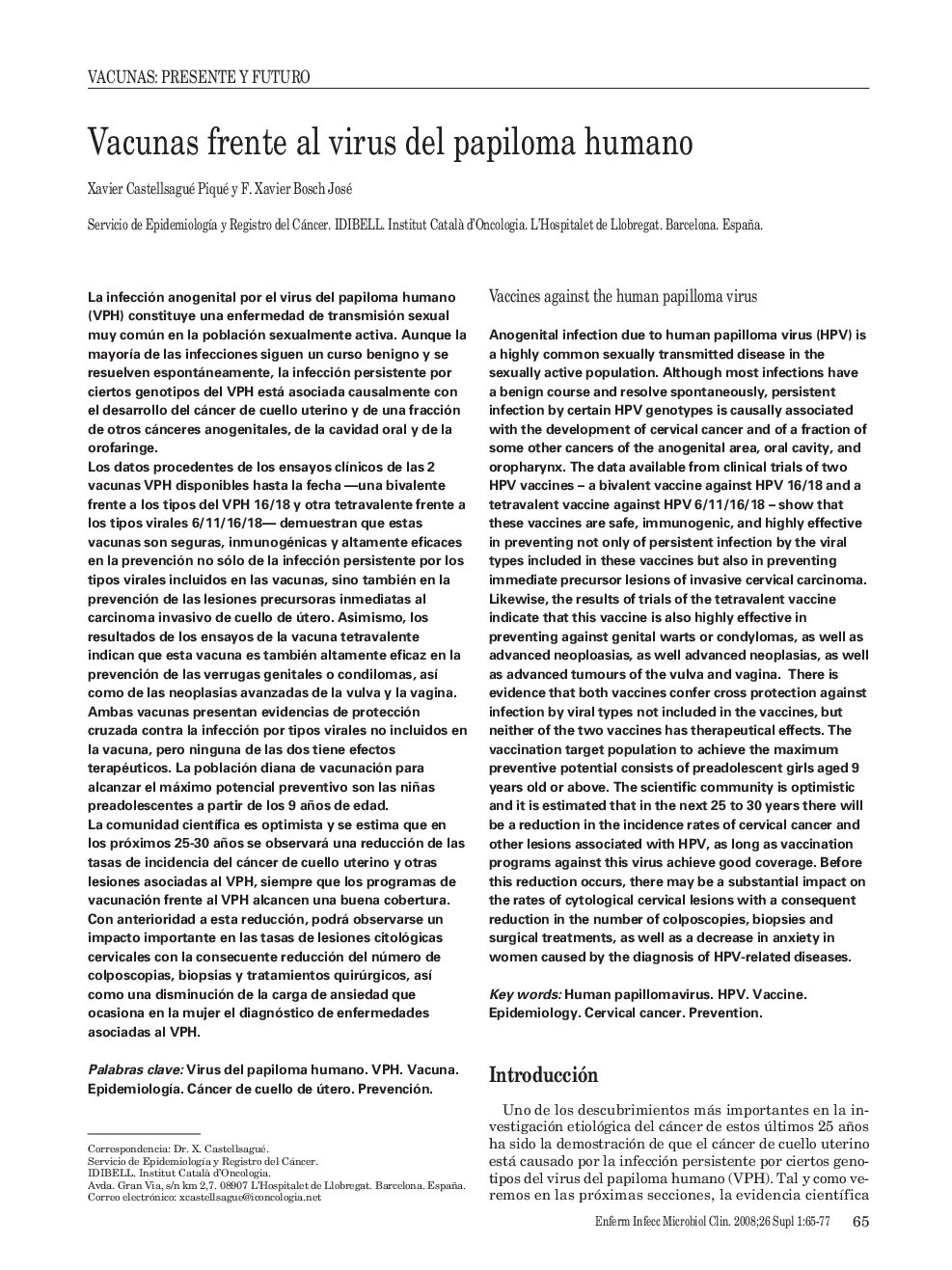| Article ID | Journal | Published Year | Pages | File Type |
|---|---|---|---|---|
| 3402846 | Enfermedades Infecciosas y Microbiología Clínica | 2008 | 13 Pages |
Abstract
Anogenital infection due to human papilloma virus (HPV) is a highly common sexually transmitted disease in the sexually active population. Although most infections have a benign course and resolve spontaneously, persistent infection by certain HPV genotypes is causally associated with the development of cervical cancer and of a fraction of some other cancers of the anogenital area, oral cavity, and oropharynx. The data available from clinical trials of two HPV vaccines - a bivalent vaccine against HPV 16/18 and a tetravalent vaccine against HPV 6/11/16/18 - show that these vaccines are safe, immunogenic, and highly effective in preventing not only of persistent infection by the viral types included in these vaccines but also in preventing immediate precursor lesions of invasive cervical carcinoma. Likewise, the results of trials of the tetravalent vaccine indicate that this vaccine is also highly effective in preventing against genital warts or condylomas, as well as advanced neoploasias, as well advanced neoplasias, as well as advanced tumours of the vulva and vagina. There is evidence that both vaccines confer cross protection against infection by viral types not included in the vaccines, but neither of the two vaccines has therapeutical effects. The vaccination target population to achieve the maximum preventive potential consists of preadolescent girls aged 9 years old or above. The scientific community is optimistic and it is estimated that in the next 25 to 30 years there will be a reduction in the incidence rates of cervical cancer and other lesions associated with HPV, as long as vaccination programs against this virus achieve good coverage. Before this reduction occurs, there may be a substantial impact on the rates of cytological cervical lesions with a consequent reduction in the number of colposcopies, biopsies and surgical treatments, as well as a decrease in anxiety in women caused by the diagnosis of HPV-related diseases.
Keywords
Related Topics
Life Sciences
Immunology and Microbiology
Microbiology
Authors
Xavier Castellsagué Piqué, F. Xavier Bosch José,
